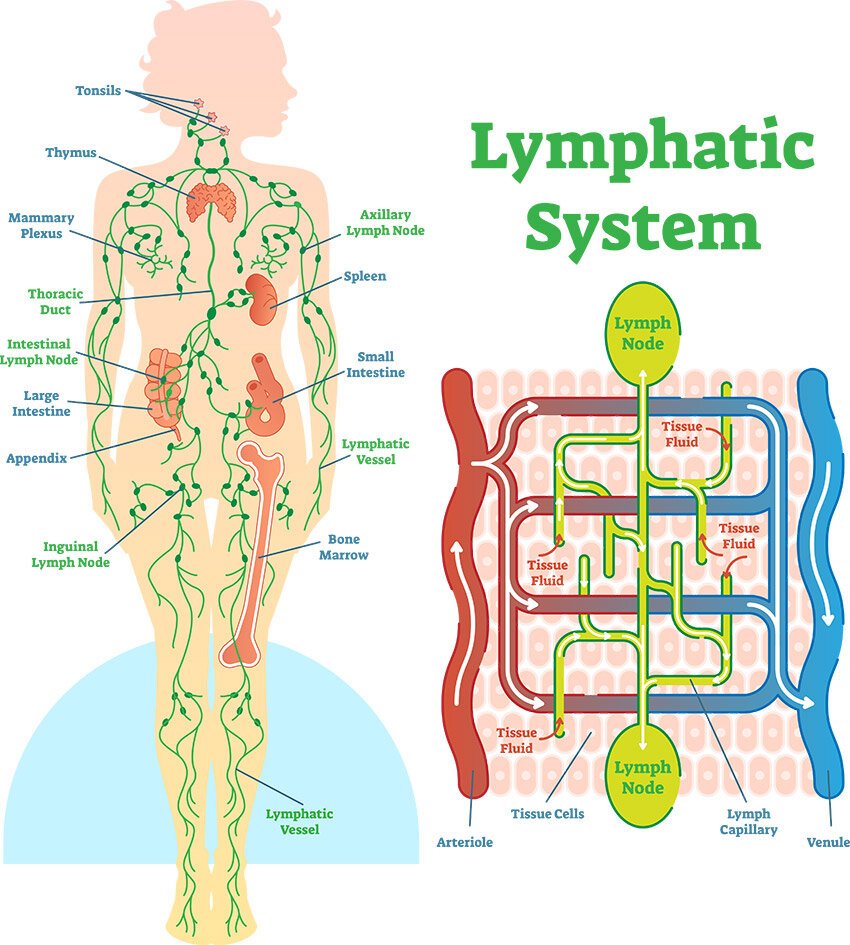Let's talk modalities: Manual Lymphatic Drainage!
/This month, we are looking at Manual Lymphatic Drainage (MLD). MLD is a series of light, gentle strokes intended to facilitate movement of lymph in the body.
What does the lymphatic system even do, anyway, and why do we care so much about lymph?
The lymphatic system regulates fluid levels in the body and fights infection. Lymphatic vessels, a network of tubes throughout the body, absorb lymphatic fluid (lymph) from the body’s interstitial space. Inside the lymphatic vessels, lymph is filtered through the lymph nodes, removing debris and pathogens. Eventually, lymph is returned through to the bloodstream at the subclavian artery under your collar bone. Like the veins of our circulatory system, lymphatic vessels have one way valves that keep fluid moving toward the heart. But while the circulatory system has the heart acting as a pump to keep blood moving, the lymphatic system has no such pump. Instead, it relies on surrounding muscles to move lymph through the vessels. If you want to get your lymph moving - move your body!
In healthy people, the lymphatic system operates just fine on its own. Injury, illness, surgery, cancer treatment or certain genetic disorders are known to adversely affect the lymphatic system. Perhaps the most well known application of MLD is for treating breast cancer related lymphedema. It is frequently necessary to remove lymph nodes during mastectomy. One in five breast cancer patients develop breast cancer related lymphedema, and MLD has been shown to enhance the compression bandaging and exercises routinely prescribed. MLD has cosmetic applications as well, as moving fluid can have a temporary slimming effect (you might have seen this on social media).
What can I expect during a MLD session?
There are a few different approaches to MLD, but they all involve light and rhythmic pressure, and methodical tensioning of the skin. The intention is to increase interstitial pressure inside the body, which in turn promotes lymph uptake into the lymphatic vessels. More research here is necessary, and the mechanism of MLD remains theoretical.
Most or all of the session will occur with the client face up. Clients will frequently fall asleep while receiving MLD, as the work is very relaxing. It is also not uncommon, however, to need to use the restroom mid session. Massage stimulates the parasympathetic nervous system (think rest and digest), and we’re specifically targeting fluid in MLD. Don’t be afraid to speak up if you have to pee!
Call or text if you’re specifically interested in MLD. This is specialized bodywork, and some but not all of our therapists are certified in it.



